Last blog, Buyer Indecision - Why Your Sales Closing Ratio is Declining, we shared why your sales conversions are declining caused not by “customer’s status quo,” but instead by Buyer Indecision.
Authors Matthew Dixon and Ted McKenna in The JOLT Effect: How High Performers Overcome Customer Indecision discovered this pattern, spotting what high performers do to overcome this.
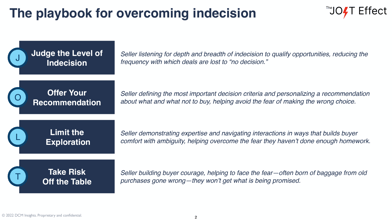 The Jolt Effect Research discovered High Performers use four techniques to conquer buyer indecision.
The Jolt Effect Research discovered High Performers use four techniques to conquer buyer indecision.
These four techniques comprise the JOLT method:
- Judge the indecision,
- Offer your recommendation,
- Limit the exploration, and
- Take risk off the table.
Matt Dixon Explains in this 4-minute video:
High Performers Judge the Indecision
This blog will share how High Performers measure prospects' indecision.
Dixon and McKenna’s research shows that between 40-60% of prospects while convinced they need to purchase, still didn’t buy. (2 Minutes)
High performers qualify opportunities based on externally observable criteria (use case fit, industry attractiveness, company dynamics), as well on less observable but critical criteria based on the customer’s ability to make decisions.
High performers qualify not just on ability to buy but on ability to decide.
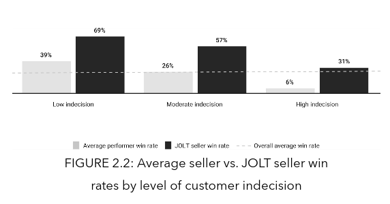 Jolt Effect research found high performers are disproportionately more likely to disqualify opportunities where the customer appears intractably indecisive.
Jolt Effect research found high performers are disproportionately more likely to disqualify opportunities where the customer appears intractably indecisive.
When they determine a customer is not hopelessly stuck but still struggling with indecision, they’re able to lean into their “indecision playbook” to forecast when the deal will close.
This is why high performers have fewer opportunities where customers display high levels of indecision and far more decisive customers in their pipelines.
Three Sources of Customer Indecision
The kiss of death for any salesperson is, “I need to think about it”
What drives the customer’s indecision?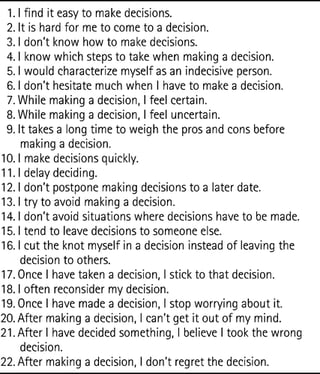
There are three sources of customer indecision: valuation problems, lack of information, and outcome uncertainty.
The book provides a series of questions salespeople ask themselves to gauge valuation problems, information issues, and the customer’s outcome uncertainty. You can download the author's Indecision Gauge on their website: Jolteffect.com
Short of using the “Indecisiveness Scale,” developed by Randy Frost and Deanna Shows in 1993, how does a salesperson judge a prospect’s indecisiveness?
The authors discovered a simple four-step process used by high-performers to assess a customer’s indecisiveness and decision-making dysfunction:
- How Does the Customer Search for and Consume Information?
- High performers look for information the customer requires to feel confident and the way in which they seek that information.
- Intuitively, there is a big difference between normal amounts of due diligence and when the amount of information requested tips over into the zone of “analysis paralysis.”
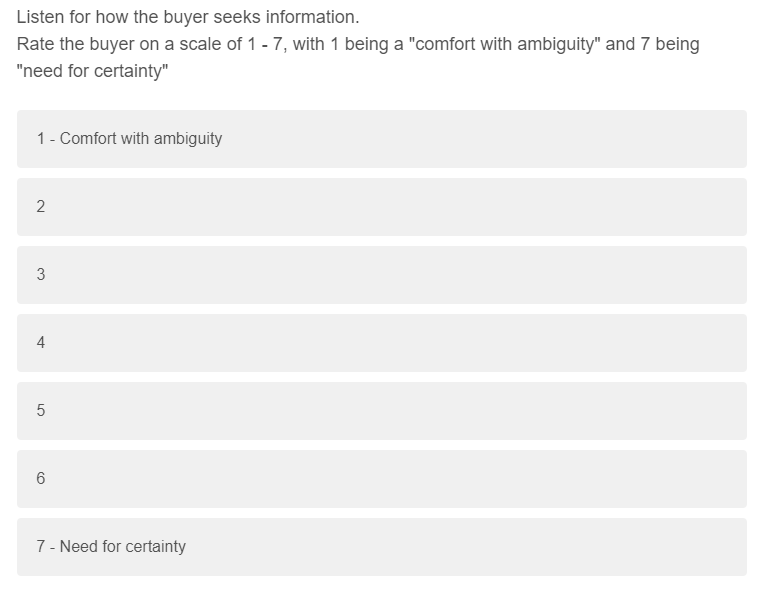
- How Does the Customer Evaluate Alternatives?
- High performers pay attention to whether the customer when comparing different providers and options, can do so in a logical and structured way versus haphazardly comparing apples and oranges.
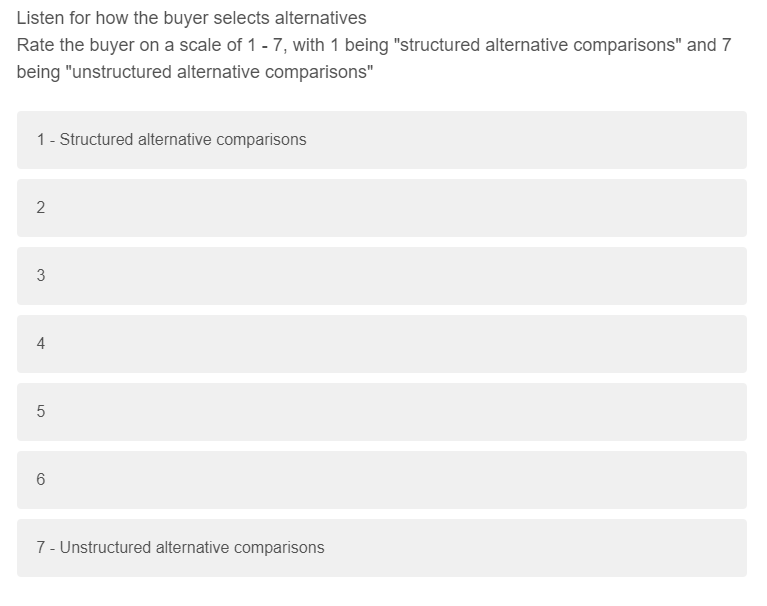
- Is the Customer Content “Good Enough”?
- Every salesperson knows sales are not a “game of perfect.” The real question is whether your customer is okay with this.
- There are fundamentally two types of people when it comes to making decisions: “satisficers” and “maximizers.” (1956, economist and Nobel Prize winner Herbert Simon)
- Satisficers are fine with “good enough” when making choices and decisions. Once they find the option that satisfies their requirements, they choose it, despite better options out there.
- For a maximizer, there is no such thing as good enough. Instead, “good” is more of an absolute concept.
- High performers look out for customers who want perfection and focus on perceived shortcomings, rather than the benefits they receive by purchasing.
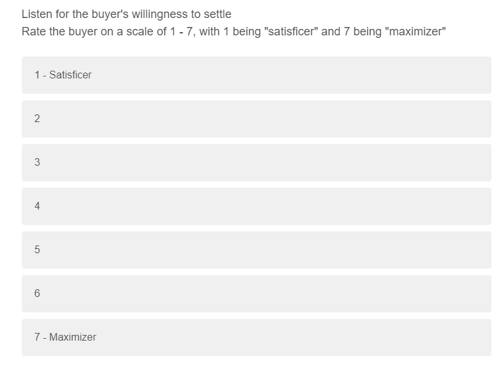
- What Is the Nature of the Customer’s Delay Tactics?
- All customers delay. Not all delays are created equal.
- When a customer procrastinates, they still intend to act even though they are temporarily putting it off.
- Decision avoidance has no such intention. “Decision avoidance,” Christopher Anderson explains, “manifests itself as a tendency to avoid making a choice by postponing it or seeking an easy way out that involves no action or no change.”
- Procrastinator delay deciding for many reasons, but a decision avoider delays for one reason: so as not to have to decide.
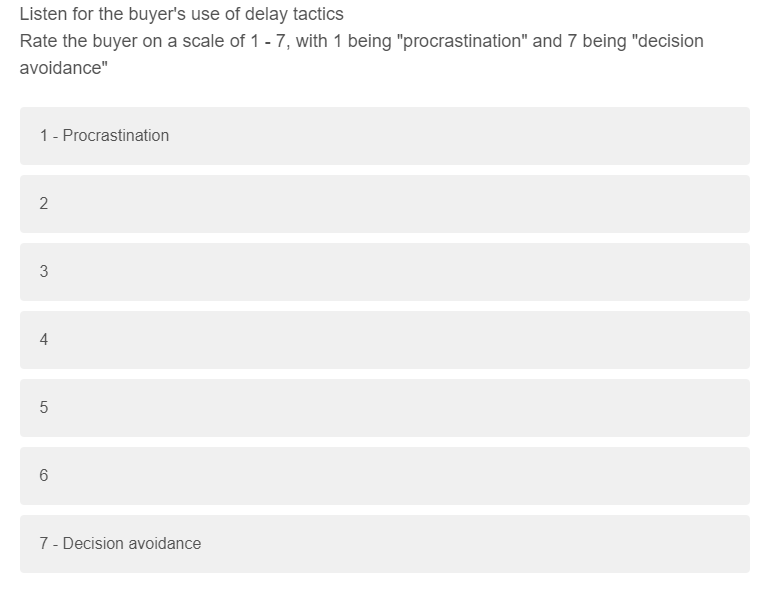 Exacerbating Factors
Exacerbating Factors
Two other dimensions determine prospect’s indecisiveness, their personal level of indecisiveness, and external factors that exacerbate indecision.
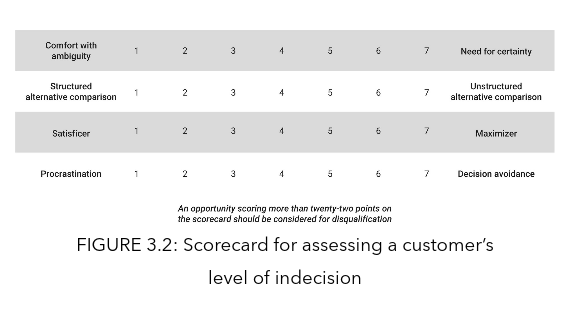 The psychological research on indecision points to several external factors—whether based on time or the perceived importance of the decision. These amplify a customer’s indecisiveness, making it more likely a deal will be lost to inaction.
The psychological research on indecision points to several external factors—whether based on time or the perceived importance of the decision. These amplify a customer’s indecisiveness, making it more likely a deal will be lost to inaction.
Time pressure exacerbates the propensity of a customer to get stuck. The authors’ data points to the ineffectiveness of high-pressure-selling tactics to force a prospect to decide. If anything, it’s more likely for the customer to be indecisive, not less.
Watch Matt Dixon share the difference between a high performer and an average salesperson.
Your high performers already use these tactics to sell more. (You do have high performers?) The insights in The Jolt Effect, turn average performers into above-average ones closing more sales.
To create an environment where everyone is inspired to give their best, contact Positioning Systems today to schedule a free exploratory meeting.
Growth demands Strategic Discipline.
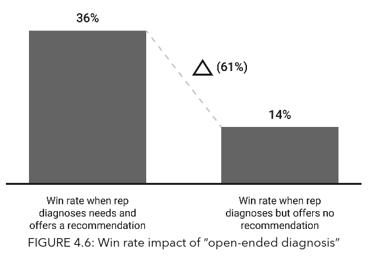 When a prospect is trying to decide, they’re often miserable. We’ll explore why more choices are not better and why High Performers provide recommendations to help prospects decide in our next blog.
When a prospect is trying to decide, they’re often miserable. We’ll explore why more choices are not better and why High Performers provide recommendations to help prospects decide in our next blog.
Building an enduring great organization requires disciplined people, disciplined thought, disciplined action, superior results, producing a distinctive impact on the world.
Discipline sustains momentum, over a long period of time, laying the foundations for lasting endurance.
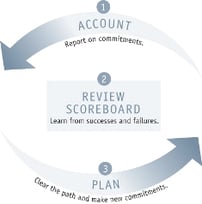 A winning habit starts with 3 Strategic Disciplines: Priority, Metrics, and Meeting Rhythms. Forecasting, accountability, individual, and team performance improve dramatically.
A winning habit starts with 3 Strategic Disciplines: Priority, Metrics, and Meeting Rhythms. Forecasting, accountability, individual, and team performance improve dramatically.
Meeting Rhythms achieve a disciplined focus on performance metrics to drive growth.
Let Positioning Systems help your business achieve these outcomes on the Four most Important Decisions your business faces:
|
DECISION |
RESULT/OUTCOME |
|
PEOPLE |
|
|
STRATEGY |
|
|
EXECUTION |
|
|
CASH |
|
Positioning Systems helps mid-sized ($5M - $500M+) businesses Scale-UP. We align your business to focus on Your One Thing! Contact dwick@positioningsystems.com to Scale Up your business! Take our Four Decisions Needs Assessment to discover how your business measures against other Scaled Up companies. We’ll contact you.
NEXT BLOG – Eliminate Choice – High Performers Make Recommendations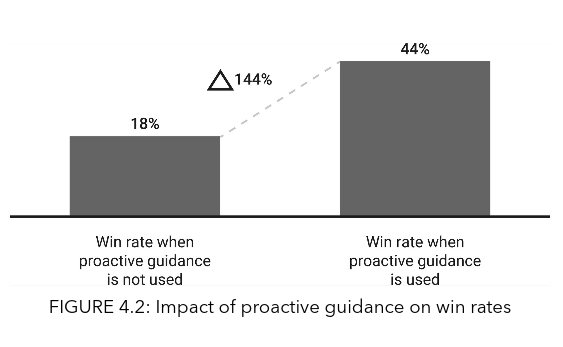






.jpeg?width=150&height=135&name=Hand%20with%20marker%20writing%20the%20question%20Whats%20Next_%20(1).jpeg)

